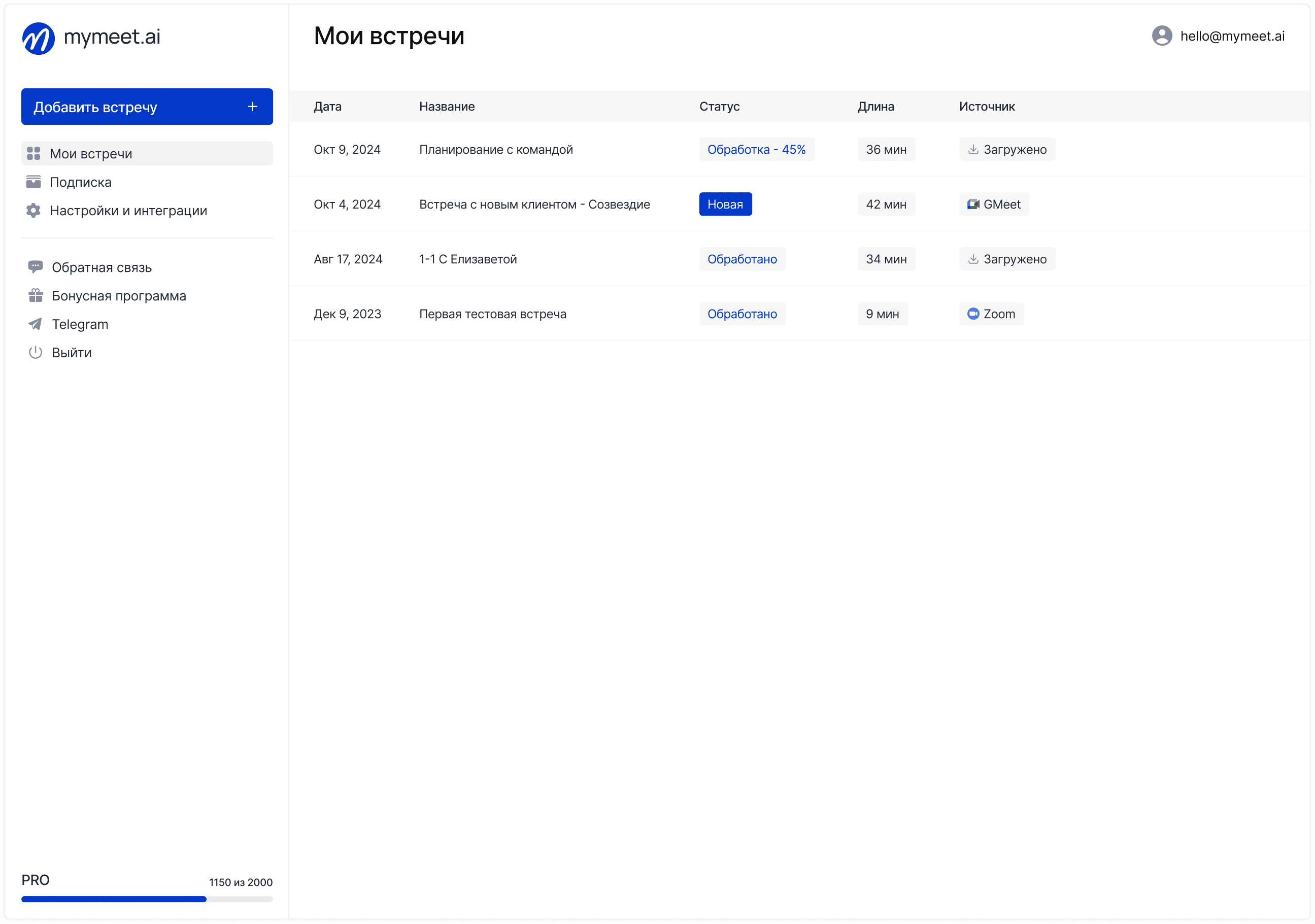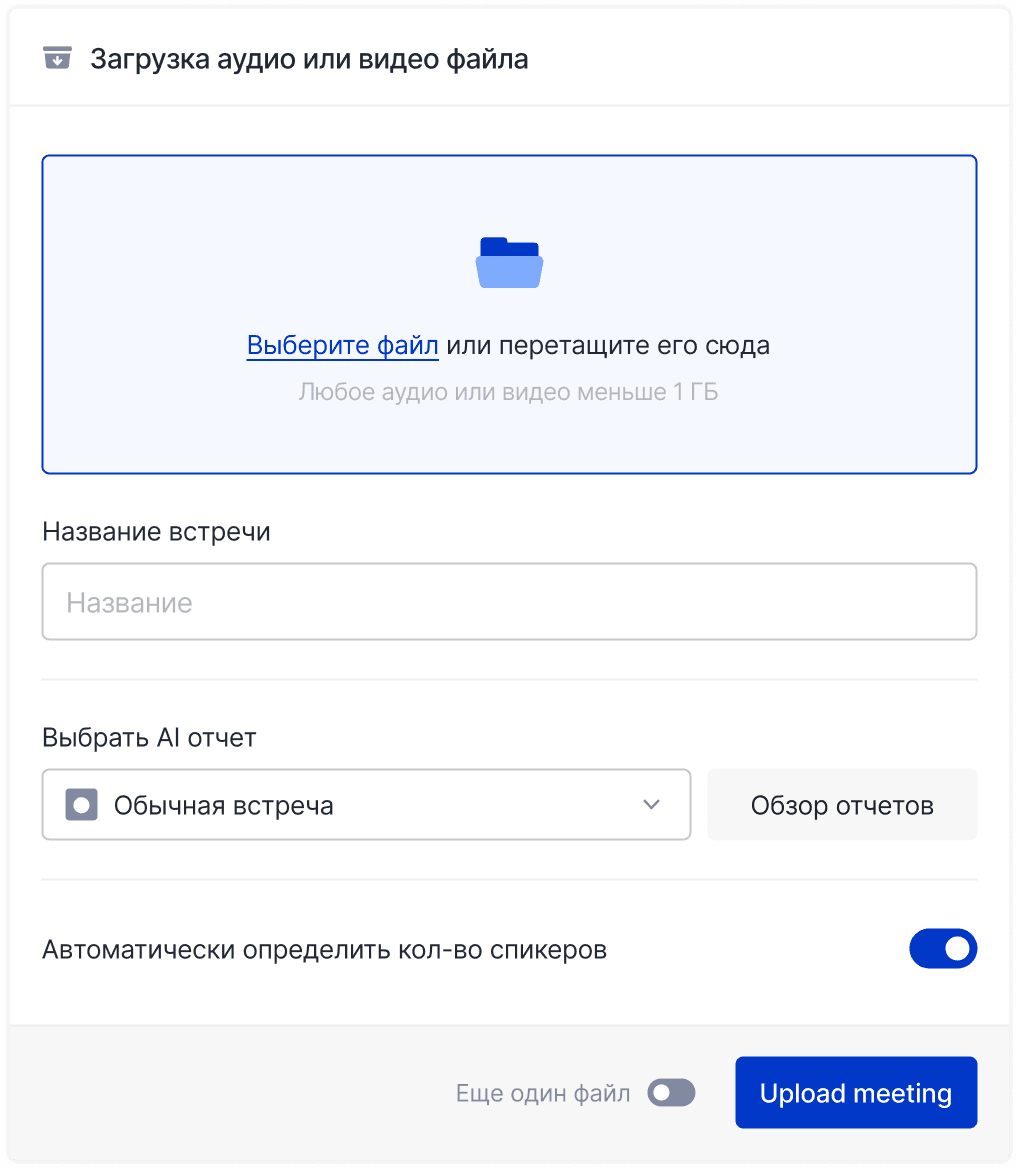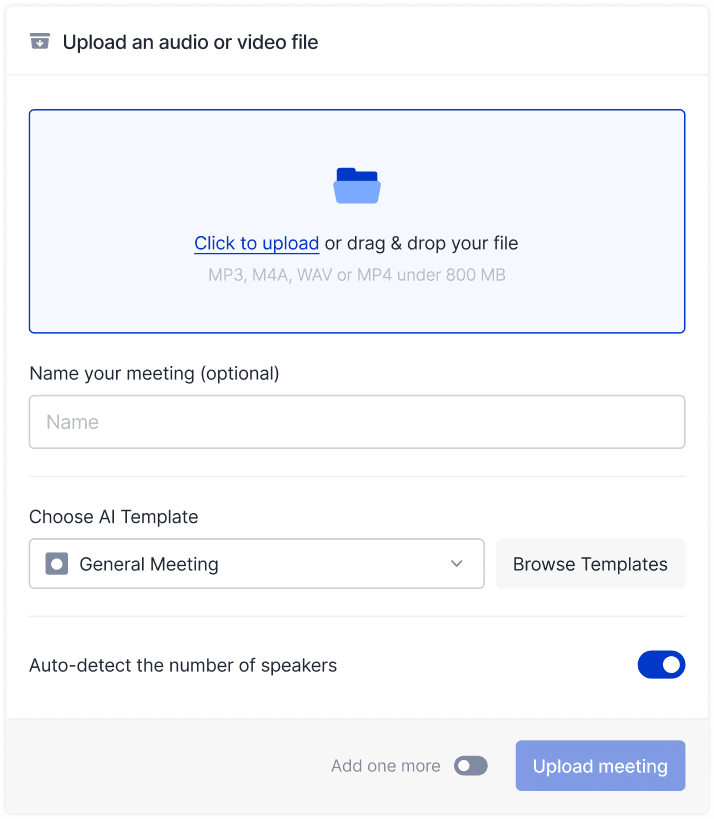Meeting Tips

Radzivon Alkhovik
Nov 27, 2025
A Zoom meeting with 10 people. The leader spends 15 minutes sharing company news. The other 9 people listen silently, occasionally nodding. At the end: "Any questions?"—silence. Everyone spent an hour of calendar time. This same information could have been recorded on video in 10 minutes, and each person would have watched it at their convenience in 15 minutes at 1.5x speed.
Research shows that up to 60% of meetings can be replaced with asynchronous communication without losing effectiveness. Moreover, the asynchronous format often delivers better results—people absorb information at their own pace, can rewatch complex moments, and think through responses instead of giving instant reactions.
Let's break down what asynchronous meetings are, when they're more effective than live calls, how to organize them, and which tools to use.
What Are Asynchronous Meetings
An asynchronous meeting is a communication format where participants receive and process information at different times without the need for simultaneous presence. Instead of gathering everyone at one moment, a recording is created that each person watches when convenient.
Asynchronous Meeting Formats
Recorded video — speaker records a presentation, update, or demonstration. Participants watch at their convenience.
Audio message — lighter format for quick updates without needing video.
Transcription with comments — text version of the meeting where participants can leave comments on specific moments.
Structured document — information formatted as text with commenting and questions enabled.
Key Differences from Regular Meetings
Time: No need to synchronize calendars, each person watches when convenient
Pace: Can watch at 1.5-2x speed or conversely slow down, pause for notes
Rewatching: Can return to complex moments as many times as needed
Reflection: Time to formulate a thoughtful response instead of instant reaction
Focus: Fewer distractions, can watch at optimal time for concentration
Why Asynchronous Meetings Are Gaining Popularity
Growth of Distributed Teams
Teams work from different time zones. Developer in Moscow, designer in Lisbon, manager in San Francisco—finding a time convenient for all three is practically impossible. Someone always sacrifices sleep or personal time.
Asynchronous format solves the problem—everyone receives information during their working hours.
Video Call Fatigue
Zoom fatigue is a real phenomenon. Research shows that video calls are more exhausting than live communication due to:
Need to constantly look at the screen
Cognitive load from reading nonverbal signals through video
Absence of natural pauses
Self-monitoring your image on screen
5-6 meetings a day drain energy. Asynchronous format reduces the burden.
Need for Flexible Schedule
Deep work requires long uninterrupted blocks of time. When your calendar is broken up by meetings every 1-2 hours, it's impossible to immerse yourself in complex tasks.
Asynchronous meetings provide flexibility—you can dedicate the morning to deep work and watch updates in the afternoon.
Team Time Savings
The math is simple:
Live meeting with 10 people for 1 hour = 10 person-hours
Recording of 15 minutes that 10 people watch for 15 minutes each = 2.5 person-hours + recording time
Savings: 75% if the information is one-directional.
When Asynchronous Meetings Are More Effective Than Live Calls
Not all meetings can be replaced with asynchronous format. But there are clear scenarios where recording works better.
Informational Updates and Status Reports
Scenario: Leader shares company news, strategy updates, process changes. Dialogue isn't required, only conveying information.
Why asynchronous is better:
No need to gather everyone simultaneously
Can rewatch if something is unclear
Time savings—each person watches for 10-15 minutes instead of an hour on the calendar
Can attach additional materials and links
Example: Weekly CEO update for the entire company. Records a 20-minute video on Friday, team watches Monday morning.
Presentations and Product Demonstrations
Scenario: Demonstration of a new product feature, training material, research results presentation.
Why asynchronous is better:
Can show screen and walk through functionality in detail
Viewers pause and try it themselves
Recording becomes training material for new employees
Can rewatch when working with the feature
Example: Product team records a demo of a new feature. Developers, designers, support watches at their convenience, ask questions in comments.
Team in Different Time Zones
Scenario: Part of the team in Europe, part in Asia, part in America. 8-12 hour difference.
Why asynchronous is better:
Impossible to find a time convenient for everyone without sacrifices
Live meeting means someone wakes up at 6 AM or works at 10 PM
Asynchronous format respects everyone's personal time
Example: Startup with developers in Moscow, designer in Barcelona, CEO in New York. All updates and demos are recorded asynchronously.
Complex Information Requiring Reflection
Scenario: Strategic decisions, complex technical changes, important documents requiring analysis.
Why asynchronous is better:
Need time to digest information
Can study details at your own pace
Formulate a thoughtful response instead of impulsive reaction
Can discuss with colleagues before official response
Example: Architectural decision for the year ahead. Tech lead records presentation with rationale, team studies it, 2 days later live meeting to discuss questions.
One-Way Communication
Scenario: Just need to convey information, discussion isn't required or is minimal.
Why asynchronous is better:
No point keeping 10 people for an hour if 90% of the time one person speaks
Participants can quickly skim through information if it's not critical for them
Or conversely study in detail if important
Example: HR policy update. HR manager records what changed and why, team watches and asks questions if any.
When Live Meetings Are Irreplaceable
Asynchronous format isn't a panacea. There are situations where synchronous meetings are critical.
Brainstorming and Creative Sessions
Why life is needed: Group energy, spontaneous ideas, one thought triggers another. Creativity is born in live dialogue.
Making Urgent or Complex Decisions
Why life is needed: Need to quickly discuss pros and cons, hear all viewpoints, reach consensus. Asynchronously this would take days.
Conflict Resolution
Why life is needed: Emotional context is critical. Text or asynchronous video can amplify misunderstanding. Need live dialogue with empathy.
Complex Client Negotiations
Why life is needed: Need to sense client reaction in real time, adapt arguments, handle objections on the spot.
Discussions Requiring Rapid Interaction
Why life is needed: When each answer affects the next question. Such discussion would stretch over a week asynchronously.
Building Team Relationships
Why life is needed: Social connections, informal communication, and a sense of belonging to the team are formed in live interaction.
How to Organize an Asynchronous Meeting Properly
An asynchronous meeting requires a different approach than simply "record and send."
Step 1: Determine If the Format Is Suitable
Ask questions:
Is real dialogue needed or is this one-way communication?
Is it urgent or can time for reflection be given?
Is instant feedback required?
If the answers are "one-way," "not urgent," "not required"—asynchronous format will work.
Step 2: Prepare Content Structure
Don't improvise on camera. Prepare a plan:
Clear recording goal—what should viewers understand/learn
Structure: introduction → main points → conclusions → next steps
Timing for each part
Visual materials if needed
Goal: 10-15 minutes of content maximum. If more—break into several short recordings.
Step 3: Record the Content
Tips for quality recording:
Technical quality:
Good audio is more important than good video—use a decent microphone
Sufficient lighting if recording yourself
Stable internet if recording to cloud
Delivery:
Speak slightly more energetically than in real life—energy is lost on video
Keep the pace—don't rush but don't drag
Make pauses between information blocks
Look at the camera as if talking to a person
Structure:
Start with context: "Hi team, today I'll share product updates for the week"
Outline the structure: "I'll show 3 new features and discuss what's next"
End with call to action: "Watch the demo, write questions in comments by Wednesday"
Step 4: Create a Transcription Through mymeet.ai
Why text transcription is critical:
Quick review — can skim through text in 2 minutes and decide if you need to watch the full video
Information search — easy to find a specific moment through text search
Accessibility — people with hearing issues, non-native speakers, those working in noisy places can read
Translation — text is easy to translate to other languages
Citing — can copy a specific phrase for discussion
How to get transcription:
Upload recording to your mymeet.ai personal account
System automatically creates text transcription in 5-10 minutes
Get a report with key moments
Add timestamps for quick navigation
Step 5: Organize Feedback Collection
Don't just send the recording—create structure for response:
Comments by timestamps — participants can comment on specific video moments
Form with questions — structured opinion collection:
Is the information clear? (yes/no/partially)
What questions remain?
Do you agree with the proposed approach?
Deadline for responses — clearly state: "Expecting comments by Wednesday 6 PM"
Discussion channel — create a thread in Slack/Telegram where team can discuss among themselves
Step 6: Process the Feedback
Collect all questions and respond:
Short video with answers to questions (5-10 minutes)
Or text document with FAQ
Or short live Q&A session if there are many questions
It is important to close the loop—people should get answers to their questions.
Tools for Asynchronous Meetings
mymeet.ai — Meeting Recording and Transcription
The main tool for creating asynchronous content from meetings.
How to use:
Option 1: Recording live meeting for asynchronous viewing
Conduct a meeting with part of the team live, record through mymeet.ai (extension for Google Meet or bot for Zoom/Teams/Telemost). Others will watch the recording later. They'll get transcriptions and reports with key moments.
Option 2: Recording specifically for asynchronous format
Conduct a "meeting" with yourself—turn on recording, present material as if before an audience. Mymeet.ai will create transcription and structured reports.
Option 3: Uploading ready recording
Recorded video locally—upload to your mymeet.ai personal account. Get transcription, report, ability to comment by timestamps.
Key functions for asynchronous meetings:
Automatic text transcription in 5-10 minutes
Report with key moments and decisions
Ability to search by text and jump to moment in video
AI chat for questions about recording content
Storage of all recordings in one place
Loom — Screen Recording with Comments
When to use: Interface workflow demonstration, process explanation, training materials.
Pros: Easy to record yourself + screen, can watch with comments by time.
Notion/Confluence — Structured Documents
When to use: When information is better perceived as text than video.
Pros: Easy to structure, add links, update. Team comments directly in the document.
Slack/Telegram — Discussions and Questions
When to use: For collecting questions and discussing asynchronous content.
Pros: Fast communication, can create separate threads for each topic.
Hybrid Approach: Combining Formats
Best results come from combining asynchronous and synchronous formats.
Model 1: Asynchronous Preparation + Live Discussion
How it works:
Before the meeting send materials asynchronously (video, documents)
Participants study at their own pace, prepare questions
Live meeting only for discussing questions and making decisions
Advantages:
Live time spent only on dialogue
Everyone comes prepared
Meeting time reduced 2-3x
Example: Strategic decision. 2 days ahead you send a recorded presentation with analysis. At a live meeting, discuss and make a decision in 30 minutes instead of 2 hours.
Model 2: Live Kick-off + Asynchronous Work
How it works:
Short live kick-off (15-20 minutes) for synchronization
Team's asynchronous work throughout the week
Short live check-in at end of week
Advantages:
Team synchronized on goals
Main work in deep focus
Minimum synchronous meetings
Example: Sprint. Monday 20 minutes live planning, team works asynchronously, Friday 20 minutes retro.
Model 3: Live Meeting + Recording for Absent Members
How it works:
Conduct important meeting live with key participants
Record through mymeet.ai
Absent members watch recording and give feedback
Advantages:
No need to reschedule meeting if someone can't attend
Absent members get full context
Recording remains as decision documentation
Example: Client meeting. You record team members who weren't at the meeting, watch the recording and understand the task context.
Common Mistakes in Asynchronous Meetings
Recordings Too Long
Mistake: Recorded a 45-minute video expecting everyone to watch.
Problem: Few people will watch to the end. Optimal length is 10-15 minutes maximum.
Solution: Break into short modules of 5-10 minutes each. "Update part 1: Product", "Part 2: Marketing".
No Clear Structure
Mistake: Improvising on camera, jumping between topics, no logic.
Problem: Hard to follow, meaning is lost, unclear what's important.
Solution: Prepare a plan. Outline structure at the beginning. Summarize key points at the end.
No Deadline for Feedback
Mistake: "Watch when you have time and write what you think."
Problem: Nobody watches or they watch a week later when it's too late.
Solution: Clear deadline: "Watch by Wednesday 6 PM, I'll collect questions and respond Thursday."
Using Asynchronous Format Where Live Is Needed
Mistake: Trying to conduct brainstorming or resolve conflict asynchronously.
Problem: Losing dynamics, discussion stretches over days, worse result.
Solution: Use criteria from the "When live is irreplaceable" section to choose the format.
No Text Transcription
Mistake: Sent only video without text.
Problem: Impossible to quickly understand what the video is about, hard to find specific moments, not accessible.
Solution: Always attach transcription. Use mymeet.ai for automatic transcription.
Don't Close Feedback Loop
Mistake: Collected questions and didn't answer.
Problem: People will stop leaving feedback if they see it's being ignored.
Solution: Definitely answer all questions—video, text, or at short live sessions.
How to Measure Asynchronous Meeting Effectiveness
Team Time Savings
Metric: Person-hours spent receiving information.
Calculation:
Live meeting: 10 people × 1 hour = 10 person-hours
Asynchronously: 15 minutes recording + 10 people × 15 minutes viewing = 2.75 person-hours
Savings: 73%
Percentage Who Viewed Content
Metric: What percentage of the target audience watched the recording.
Healthy indicator: 80%+ for mandatory content, 50%+ for optional.
How to increase: Short recordings (up to 15 minutes), clear title showing value, deadline for viewing.
Feedback Quality
Metric: Quantity and depth of comments/questions.
Good sign: Specific questions, detailed comments, suggestions.
Bad sign: Only "ok" and "got it", or complete absence of reaction.
Team Satisfaction
Metric: Periodic team survey.
Questions:
Do you prefer asynchronous format for informational updates? (yes/no)
How much time do you save thanks to asynchronous meetings? (hours per week)
What to improve in asynchronous format?
Conclusion
Asynchronous meetings are a powerful tool for saving team time and increasing work flexibility. They won't replace all live calls, but can free up 30-40% of your calendar from meetings where you're just passively listening.
Key principles of effective asynchronous meetings: short content (10-15 minutes), clear structure, text transcription for quick review, organized feedback collection with deadline, answers to all questions.
Start small: Choose one weekly informational meeting and convert it to asynchronous format. Record an update, create transcription through mymeet.ai, and collect feedback. Analyze the result and scale to other suitable meetings.
The best approach is hybrid: asynchronous preparation + short life for discussion. Or live meeting + recording for absent members. Combine formats depending on goals.
Try mymeet.ai for creating asynchronous content—180 minutes of recording and transcription free without card attachment. Upload a recording or record a meeting, get text transcription and report in 5-10 minutes.

Frequently Asked Questions
What is an asynchronous meeting?
An asynchronous meeting is a communication format where participants receive information at different times without simultaneous presence. A recording (video, audio) is created that each person watches at their convenience instead of a live call.
How does an asynchronous meeting differ from a regular one?
A regular meeting requires simultaneous presence of all participants. Asynchronous—each person watches the recording when convenient, can speed up, pause, rewatch. Saves team time and provides flexibility.
When is asynchronous communication more effective than a live meeting?
Asynchronous format is better for informational updates, presentations, product demonstrations, teams in different time zones, complex information requiring reflection, one-way communication. Life is needed for brainstorming, decision-making, conflicts, complex negotiations.
How to record an asynchronous meeting with quality?
Prepare content structure, keep length to 10-15 minutes, use a good microphone, speak energetically, make pauses between blocks. Record through mymeet.ai (extension for Google Meet or upload file), get automatic transcription and report.
What tools are needed for asynchronous meetings?
Mymeet.ai for recording and automatic transcription, Loom for screen recording, Notion/Confluence for text materials, Slack/Telegram for collecting questions and discussion. Main thing—tool for creating text video transcription.
Can you completely abandon live meetings?
No, and you shouldn't. Live meetings are critical for brainstorming, making complex decisions, resolving conflicts, and building team relationships. The goal is to replace 30-40% of informational meetings with asynchronous format, not all meetings entirely.
How to get feedback in asynchronous format?
Create structure for feedback: comments by timestamps in video, form with specific questions, thread in Slack for discussion. Set a clear deadline for responses. Collect questions and answer—video or text.
How long should an asynchronous meeting be?
Optimally 10-15 minutes for one topic. If more—break into several short recordings of 5-10 minutes each. Long recordings (30+ minutes) few people watch to the end.
How to automatically transcribe a meeting recording into text?
Use mymeet.ai: for Google Meet turn on recording through Chrome extension, for other platforms connect bot through personal account or upload ready file. The system automatically creates text transcription in 5-10 minutes with speaker separation.
Are asynchronous meetings suitable for client communication?
Partially. Informational presentations, product demonstrations, training materials can be recorded asynchronously. But first meetings, negotiations, and discussing complex issues require a live format for building relationships and handling objections in real time.
Radzivon Alkhovik
Nov 27, 2025








